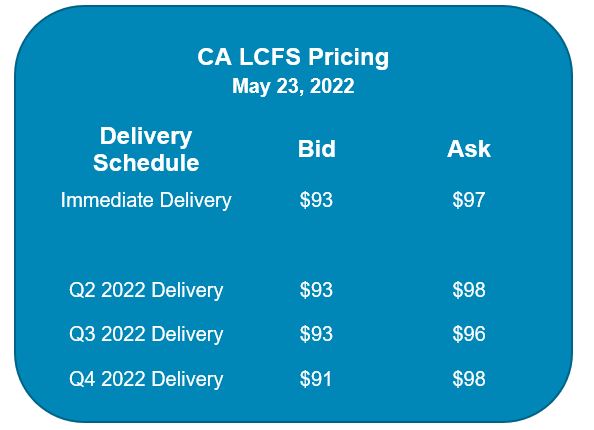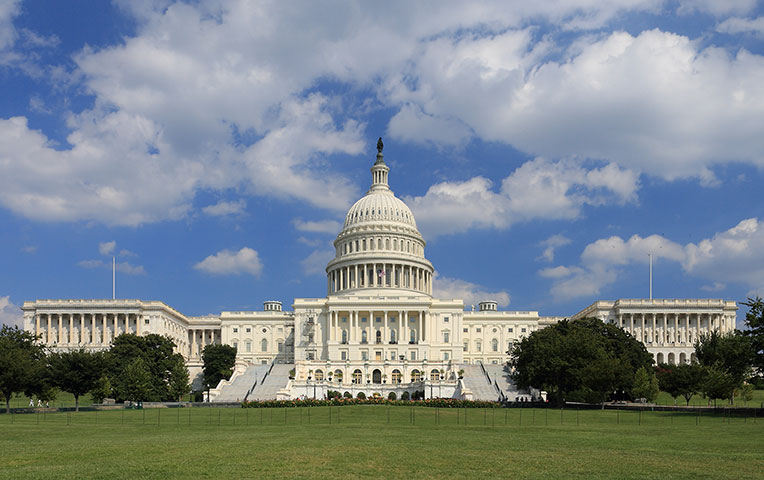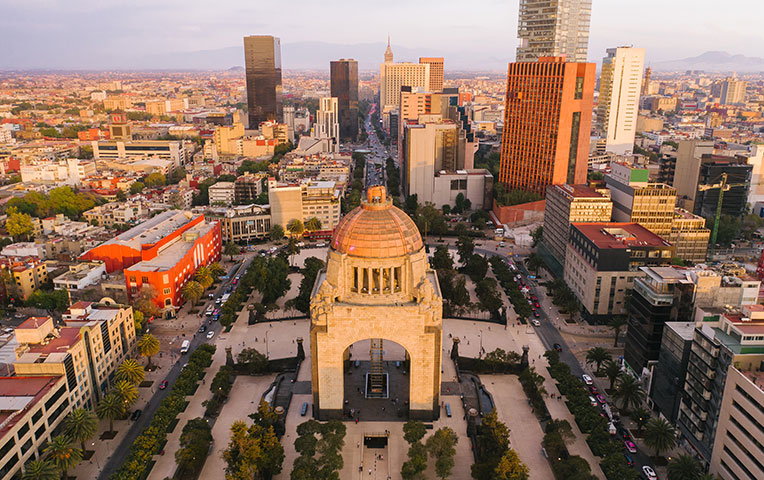Click here to read the Sol SOURCE January 2022.
The Sol SOURCE is a renewables journal that our team distributes to our network of clients and solar stakeholders. Our newsletter contains trends and observations gained through interviews with our team, incorporating news from a variety of industry resources.
Below, we have included excerpts from the January 2022 edition. To receive future Journals, please subscribe or email SOURCE@solsystems.com.
STATE MARKETS
California – NEM 3.0 reform creates uncertainty, and likely new hurdles for California solar developers. On December 13, 2021, the California Public Utilities Commission (CPUC) released the eagerly anticipated proposed decision in the NEM 3.0 docket. The proposed decision was left off the docket for the January 27, 2022, meeting, delaying a discussion until at least February – the next open meeting is February 10, 2022, with the agenda published 10 days prior. Turnover at the Commission and a new Chair, as well as increasingly public discord over the proposal, could amplify this delay.
Stakeholder and analyst reactions are varied, but what does seem clear is that if the decision were to be finalized as proposed, California NEM would drastically lower compensation for residential rooftop solar without storage. Given the relatively high penetration of solar in California, electricity is abundant and cheap midday, but the CAISO grid is increasingly strained in the early evening hours when solar production declines but air-conditioning and other high-demand uses remain. The system is a bit “ducked” as it were.
The Proposed Decision’s intent is to incentivize a shift to solar plus storage, and larger-scale solar, in order to reduce demand for high-emitting peak power. Some of the key proposed changes include reducing payments to solar customers whose production exceeds use, adding a monthly “grid participation charge” for homes (but not businesses) that install solar, adding a temporary “market transition credit” to lessen some higher costs for households outside SDG&E territory, requiring homes that already have solar panels to switch from the existing net metering program no later than 15 years after their sy stems were installed (20 years for low-income homes), and creating a “storage evolution fund” to encourage homes and businesses that already have solar to add batteries, creating an “equity fund” of up to $600 million over four years to bring clean energy to low-income and more-polluted neighborhoods.
This could enable homes and businesses to install solar systems up to 150 percent of their electrical demand to help cover future demand from electric cars or electric heating systems (note, California recently required all new single-family and multi-family homes up to three stories high to have a solar photovoltaic (PV) system as an electricity source), and to shift to time of use (TOU) rates. These changes would apply to customers of SCE, PG&E, and SDG&E but not of publicly owned utilities such as the LADWP. Overall, the proposed NEM revisions are a risk to solar developers, specifically rooftop developers that do not develop storage. However, broad opposition is likely to alter the final rulemaking, and the final rule could provide an opportunity to developers of more flexible systems that are able to displace more emissions by displacing dirtier electricity across more hours of the day.
Connecticut – The fate of banked RECs remains technically unknown in Connecticut. Last year, the Public Utilities Regulatory Authority (PURA) proposed several changes to the Renewable Portfolio Standard (RPS), including the ability to change (and possibly eliminate) the number of RECs that could be banked and used for compliance in future years, which would introduce quite a lot of uncertainty and downward price pressure in the market if finalized and upheld against certain legal challenge. We expect a final ruling in 2022. On July 28, 2021, PURA issued a final order to establish a nine-year, statewide Electric Storage Program for all residential, commercial, and industrial customers.
District of Columbia – New solar energy metering requirements could cause DC residents and businesses to pay for more solar. On August 13, 2021, the DC Public Service Commission (PSC) proposed to require all renewable generating facilities, including behind-the-meter generators, to use revenue-grade production meters or inverter-based production measurement equipment, as opposed to the current allowance for estimation from small sources.
The overwhelming majority of comments submitted by the October 13, 2021, deadline recommended that new requirements should only apply to new customers, with many opposing the entire proposal. We expect any final rule to be pushed into the fall of 2022 at the earliest, with a potential for the rule to be re-proposed. The DC PSC is also working to replace Commissioner Willie Phillips, who was confirmed to the Federal Energy Regulatory Commission (FERC) in late 2021. As a national leader and early adopter of urban solar incentives, DC is facing the twin challenges of how to measure small systems while the market shifts away from the 3G used by many older metered systems. These challenges, at the same time as the shift from the central station grid model to a more flexible, two-way grid, provide an opportunity for developers that can offer high-quality data, including to existing systems providing verifiable solar electricity.
Illinois – Governor Pritzker re-opened Illinois to solar development by signing the Climate and Equitable Jobs Act (CEJA; SN 2408) on September 15, 2021 and a trailer bill (HB 3666) that clarified several provisions, including around prevailing wage requirements and high impact business provisions, in November 2021. Notably, the law sets Illinois on a path to 100 percent clean electricity by 2050. The omnibus energy legislation is quite expansive, but importantly for the solar industry, it re-opens and re-funds the previously closed Adjustable Block Program (ABP). CEJA added three new Block categories (solar on schools, community-driven community solar, and distributed generation (DG) that utilizes equity-eligible contractors) in addition to the original Block categories of small DG, large DG, and community solar. The Illinois Power Agency (IPA) formally re-opened the ABP on December 14, 2021.
Outside of the ABP, the law also includes new labor standards that include the payment of prevailing wage for all solar projects that receive renewable energy credits (RECs) from the IPA. Utility-scale projects, which do not qualify for the ABP, will be able to participate in the first Indexed REC request for proposals (RFP) this spring. Stakeholder comments on the IPA’s draft REC contracts concluded on December 17, 2021, and final language is expected early- to mid-2022. In accordance with CEJA, the IPA withdrew the current Long-Term Renewable Resources Procurement Plan (LTRRPP) revision and issued a new draft on January 13, 2022. The draft LTRRPP incorporates changes to the RPS resulting from CEJA and provides additional clarity on topics including the ABP, competitive procurements, and REC eligibility.
Maine – Like a crisp winter sunrise over Acadia, new DG opportunities are coming over the horizon in the Pine Tree State. On November 2, 2021, Maine voters approved a ballot question to require that a two-thirds majority vote is required to approve new major transmission lines, including the New England Clean Energy Connect (NECEC). On November 3, 2021, NECEC developers filed a lawsuit challenging the ballot question.
However, the recently passed federal infrastructure law allows the Secretary of Energy to designate National Interest Electric Transmission Corridors, which would give FERC backstop siting authority to approve projects in the national interest, which may include NECEC. Separately, in 2021, the passage of L.D. 936 required Maine to begin the process of revamping their Net Energy Billing (NEB) program. Notably, the law directed the Governor’s Energy Office to prioritize distributed generation that is sited on previously-developed land, such as brownfields, within a low-to moderate-income community, or directly serving customer load.
The GEO, alongside a stakeholder group, published an interim report on NEB alterations and impacts on December 31, 2021. A straw proposal with concrete successor recommendations will be released in 2022 and a final report will be delivered to the State Legislature in 2023. This effort will hopefully lead to a more equal incentive distribution between large-scale developers and smaller C&I developers who are working to ensure clean solar electricity is a reality in communities that would otherwise not benefit from clean energy.
Massachusetts – Policymakers are moving forward on the region-leading effort to maximize solar deployment in high-density areas and improve the interconnection process in one of the nation’s oldest grids. On September 7, 2021, FERC opened a review of ISO-NE’s rules for requiring grid upgrades to accommodate planned transmission facilities. On October 29, 2021, the Massachusetts Department of Energy Resources (DOER) filed its proposed final Phase 2 version of the 225 CMR 14.00 Renewable Energy Portfolio Standard (RPS) Class I and 225 CMR 15.00 RPS Class II with the Secretary of the Commonwealth’s Office. The Phase 2 version of the regulation contains changes related to biomass. The final version of the regulations along with the associated guidelines can be found here. On November 24, 2021, in Docket 20-75, the Massachusetts Department of Public Utilities (DPU) issued an order establishing a provisional cost allocation program (Provisional Program) to facilitate the interconnection of distributed generation currently in the interconnection queue and facing atypically high interconnection costs.
As a reminder, Docket 20-75 was established primarily to consider cost socialization to reduce interconnection costs faced by developers. While timing is uncertain, we do still expect an additional order on the long-term planning process described in the DPU’s Straw Proposal. On December 30, 2021, the DPU issued a long-awaited order expanding the Solar Massachusetts Renewable Target (SMART) program from 1,600 to 3,200 megawatts (MW). Notably, the DPU rejected utilities’ proposed tariffs and directed them to refile a tariff within 15 business days. The order officially took effect on January 14, 2022.
New Jersey – The solar successor program is finally in place, but over 3,000 TREC applicants hang in limbo as the BPU processes last-minute applicants. After months of stakeholder processes and input, the Board of Public Utilities (“BPU”) released four orders on July 28, 2021, including a detailed solar successor incentive program and the official close of the Transition Incentive (TI) program (August 27th, 2021). The new Successor Solar Incentive Program, “SuSI”, provides incentives for both projects under 5MW (“Administratively Determined Incentive”) and over 5MW (“Competitive Solar Incentive”). The ADI provides fixed incentives for smaller DG projects and added new incentives for public entities, such as schools and municipalities. The program officially opened on August 28, 2021.
The program officially opened on August 28, 2021. At the end of October 2021, the New Jersey Board of Public Utilities (BPU) issued a draft rule proposal on the Class I cost cap calculation and methodology. The cap would be raised to about $950 million, which we expect is plenty of headroom given the cost offsets (carbon and energy value). If the cost cap is breached, the Board would be able to invoke a reduction in the ADI which is currently set to 150 MW.
On November 30, 2021, the BPU held their first stakeholder meeting regarding the design of the Competitive Solar Incentive (CSI) Program that is expected to launch later this year. Stakeholder comments on the design were submitted on December 14, 2021, and stakeholder sessions will continue in January and February of this year. On November 10, 2021, a recently re-elected Governor Murphy (D) signed Executive Order No. 274, 20221, which establishes a new interim greenhouse gas reduction target of 50 percent below 2006 levels by 2030. We expect signature of this near-term target to underpin continued strong solar incentives in New Jersey and increased focus on improving interconnection, a key BPU focus going into the new year.
New York – Like its co-leader in climate action in California, the Empire State is tackling how to maximize the emissions-reduction potential of solar energy, giving a boost to solar with storage over standalone solar projects. On December 17, 2021, the New York State Energy Research and Development Authority (NYSERDA) and New York State Department of Public Service (DPS) released the long-awaited Distributed Solar Roadmap to propose a pathway to achieve 10 GW of distributed solar deployment by 2030. New initial NY-SUN block incentives intended to sustain development through 2022 include (1) Upstate Commercial and Industrial (C&I), Small C&I (< 1 MW) in Consolidated Edison Company of New York (ConEd) territory, Large C&I (> 1 MW) in ConEd territory, and residential projects in ConEd territory. Projects in the queue that have not yet received an incentive are eligible for the new incentives. In addition, NYSERDA is recommending that prevailing wage or project labor agreements be required for all projects over 1 MW.
Despite opposition, the new Customer Benefit Contribution for residential and small commercial customers took effect on January 1, 2022. This charge does not apply to customers that interconnected solar PV systems before January 1, 2022, or to “front of the meter” projects such as community solar. This follows the recent trend, most obvious in the CPUC PD, of states looking to lessen net-metering incentives during prime hours or charge these customers directly for use of the grid. We expect this trend to continue in other states, and we expect to see more attempts to increase the value of solar systems with storage at the expense of “plain solar” going forward.
On November 30, 2021, Governor Kathy Hochul (D) announced that NYSERDA finalized contracts with Clean Path NY (CPNY) and the Champlain Hudson Power Express (CHPE) projects to connect cleaner electricity from upstate New York and Canada to New York City. NYSERDA will offer renewable attributes from these projects for voluntary purchase. These contracts have been submitted to the PSC for approval and are subject to a public comment period through February 7, 2022. Delivery is expected to begin in 2025 for CHPE and 2027 for CPNY.
North Carolina – Large clean energy buyers took a hit on October 13, 2021, when Governor Roy Cooper signed House Bill 951, Energy Solutions for North Carolina, which includes a number of provisions aimed at increasing clean energy deployment and reducing carbon emissions in the state, but largely excludes corporate procurements. The bipartisan law sets a carbon emissions reduction target of 70 percent by 2030 and carbon neutrality by 2050. The law also provides provisions for utility procurement but falls short of meeting the needs of businesses and other large energy consumers. The new law incentivizes utility ownership over competitive markets and flags a need to revise future policy to better align utility and independent developer interests with large renewable energy buyers to maximize deployment and emissions reductions.
Ohio – Final word on HB6 is still in limbo amid a heated legal battle with multiple legislative solutions on the table. The FirstEnergy HB 6 legal battle continues to dominate Ohio politics and energy policy discussions after this year’s passage of SB 52. On July 12, 2021, Governor DeWine (R) signed SB 52, which subjects large (over 50 MW) wind and solar projects to review by County Commissioners before Ohio Power Siting Board (OPSB) review. The legislation also allows County Commissioners to establish restricted areas where wind and solar projects are prohibited, subject to local referendum; adds members to the OPSB from affected counties; and requires developers to submit decommissioning plans when applying to OPSB. Ohio continues to be a big opportunity for large-scale solar and wind developers given their connection to PJM and MISO, as well as availability of former fossil interconnection sites. We see SB 52 as codifying good community engagement practices for developers and adding a manageable number of steps to the siting process.
Pennsylvania – A number of factors continue to dampen the otherwise-significant investment potential in the Commonwealth, including hostility to renewables from the Republican-controlled Legislature, flatlining of the Alternative Energy Portfolio Standard (AEPS) in 2021, and continued discord over RGGI. Pennsylvania has become a key state in the discussion of how to ensure proper decommissioning of solar facilities, particularly on agricultural lands. HB 2104 would establish state-wide decommissioning requirements for projects over 3 MW with a phased-in approach to posting financial assurance, which may be in the form of an escrow account or bond, and potentially letters of credit. However, two elements remain unresolved: First, the bill does not explicitly require the inclusion of salvage value in the calculation of decommissioning costs to reduce the amount of financial assurance required (it also does not exclude its use in the calculation or acquisition of a bond). Second, the bill requires that no more than 20 percent of a project’s total mass may be landfilled. Some have misinterpreted this as a requirement to recycle the remaining 80 percent, but the wind industry is particularly concerned that many of their components cannot yet be recycled and require ongoing parts replacement throughout the life of a project. Discussions on decommissioning renewables projects continue in both Chambers (the Senate is SB 284). Also this week, the bill (SB 945) to require the Commonwealth to sell (rather than retire) SRECs associated with solar procurements passed out of Committee, although we do not expect it to become law this session.
The Republican-controlled Legislature continues its attempts to block Pennsylvania’s participation in the Regional Greenhouse Gas Initiative (RGGI), although Governor Wolf (D) has successfully blocked their efforts. However, given the Legislative Reference Bureau’s interpretation of regulatory publication requirements, Pennsylvania’s participation will slide to at least April 1, 2022, and potentially July 1, 2022 (auction participation and revenue may be able to occur earlier).
Virginia – The fate of the Virginia Clean Economy Act (VCEA) and solar development in the Commonwealth teeters on Democratic control of the State Senate. On November 2, 2021, the GOP flipped all three statewide executive offices as well as the House of Delegates, while Democrats retained the Senate. This election carried national implications as it is widely considered a bellwether for the 2022 national midterms. Governor Youngkin (R) has announced initial appointments indicative of a hostile posture to clean energy, including announcement of his intention to nominate former EPA Administrator Andrew Wheeler to lead the Department of Natural Resources. He has also stated a desire to reverse Virginia’s recent participation in the RGGI, although this would require legislative approval. All this leads us to watch Virginia particularly closely and ramp-up advocacy efforts to protect the recently-enacted VCEA.
Regional Round-Up
PJM – On December 15, 2021, PJM released a study looking at how to manage a high-renewables grid and found that PJM would better handle higher renewables penetration with strategic regional transmission expansion, grid-enhancing technologies, and storage. PJM also continues to move forward to reform the interconnection queue process. The goal of the reformed process is much faster interconnection agreements – currently, the process averages four years and PJM is targeting to reduce this to two years by shifting to a “cluster” versus “serial” review. While this transition will be rough for many individual projects, this switch should alleviate a significant hurdle to larger solar projects in the most populated area of the country.
Regional Greenhouse Gas Initiative (RGGI) – The December 2021 auction cleared substantially higher, at $13/allowance, just triggering the cost containment reserve (CCR), even as confusion swirled around the timing of Pennsylvania’s participation and Governor Youngkin’s desire to withdraw Virginia. This was potentially the last auction without Pennsylvania’s participation.
Transportation & Climate Initiative (TCI) – In late November 2021, states participating in TCI – a cap-and-invest program covering liquid transportation fuel (e.g., diesel and gasoline but not natural gas) – abandoned the program after Connecticut Governor Ned Lamont (D) and Massachusetts Governor Charlie Baker (R) withdrew.
TRADE UPDATE
- On December 9, 2021, the U.S. International Trade Commission formally recommended Section 201 tariffs be extended another four years past the current endpoint in February. President Biden will make the decision before the current tariffs expire February 7, 2022. The parallel challenge to the bifacial exemption is continuing, and our trade groups are optimistic that will persist even if the tariffs are extended.
- On December 23, 2021, President Biden signed the Uyghur Forced Labor Prevention Act. The law aims to prohibit imports made using the forced labor of ethnic Uyghur Muslims in China, which the U.S. and other nations have termed an ongoing genocide. While the Section 201 tariffs were not in response to forced labor concerns, they have become politically entwined and passage of this law may relieve some pressure to extend the tariffs despite their impact to the President’s clean energy goals.
- Meanwhile, global supply chains continue to challenge the solar industry. While the price to install new solar continues to be relatively cheap compared to previous decades, supply chain disruptions led to increases in system pricing across all sectors of the industry. Utility-scale systems with single-axis trackers were among the worst hit, with system pricing increasing by 9 percent year-over-year in 2021. Rystad Energy recently estimated shipping and equipment costs could postpone or cancel more than half of worldwide utility-scale solar projects planned for 2022.
SOLAR CHATTER
- On December 8, 2021, President Biden signed an executive order requiring achievement of net-zero greenhouse gas emissions from federal electricity usage, vehicle fleets, buildings, operations and procurement activities by 2050. The EO uses the scale and procurement power of the federal government to achieve emissions reductions. The EO directs federal agencies use electricity from carbon-free sources by 2030, which it said will spur an additional 10 gigawatts of clean energy demand.
- On December 7, 2021, more than 50 large electric utilities announced the National Electric Highway Coalition (NEHC) to install EV fast-charging infrastructure along major U.S. highway corridors by the end of 2023, in an effort to alleviate consumer range anxiety. The coalition is led by the Edison Electric Institute (EEI), which anticipates 22 million EVs in the U.S. roads by 2030, requiring more than 100,000 fast chargers.
- SEIA and Wood Mackenzie Power & Renewables released their Solar Market Insight Report for Q4 2021 last month. Utility-scale solar set another record year with 3.8 GWdc of installations and over 6.1 GWdc of new utility-scale solar power purchase agreements signed in Q3 2021 alone, representing 46 percent growth over the same period last year. Continuing the trend of recent years, corporations, municipal utilities, and off-takers looking to invest in cleaner power generation were principally responsible for driving this growth.
- To maximize the benefits of solar paired with agricultural land, The National Center for Appropriate Technology (NCAT) launched the nation’s first ArgiSolar Clearinghouse to connect farmers, ranchers, and land managers to solar developers to provide information and tangible benefits to increase the co-location of solar and farmland.
- Nebraska became the 20th state to commit to 100 percent clean electricity by 2050. The Nebraska Public Power District (NPPD) Board approved the decarbonization effort alongside Omaha Public Power District (OPPD) and Lincoln Electric System (LES), meaning that almost every Nebraskan will receive electricity from an energy supplier that has pledged carbon neutrality.
About Sol Systems
Sol Systems is a leading national solar energy firm with an established reputation for integrity and reliability across its development, infrastructure and environmental commodity businesses. To date, Sol has developed and/or financed over 1 GW of solar projects valued at more than $1 billion for Fortune 100 companies, municipalities, counties, utilities, universities and schools. The company also actively shapes and trades in environmental commodity and electricity markets throughout the United States. The company was founded in 2008, is based in Washington, D.C., and is led by its founder. Sol Systems works with its team, partners, and clients to create a more sustainable future we can all believe in. For more information, visit https://www.solsystems.com
















